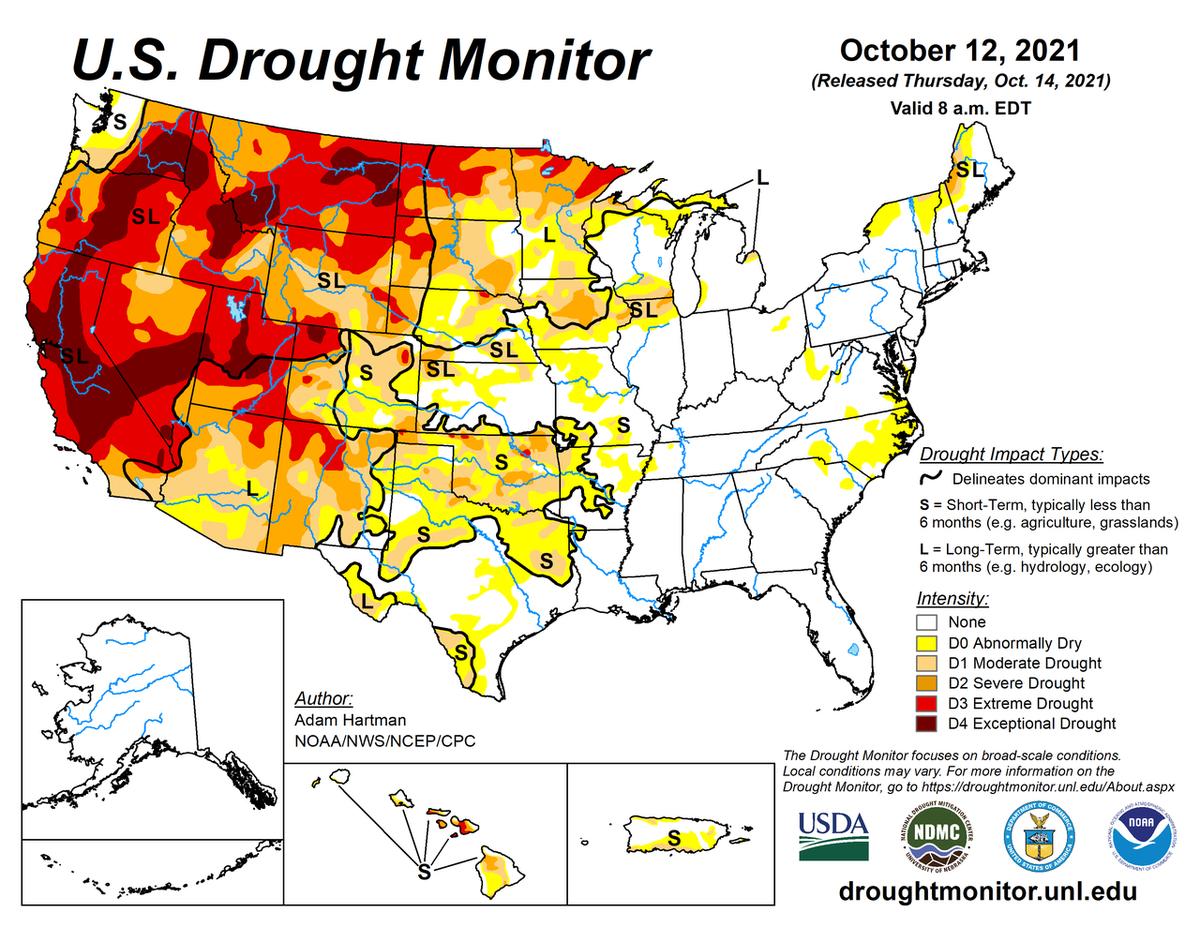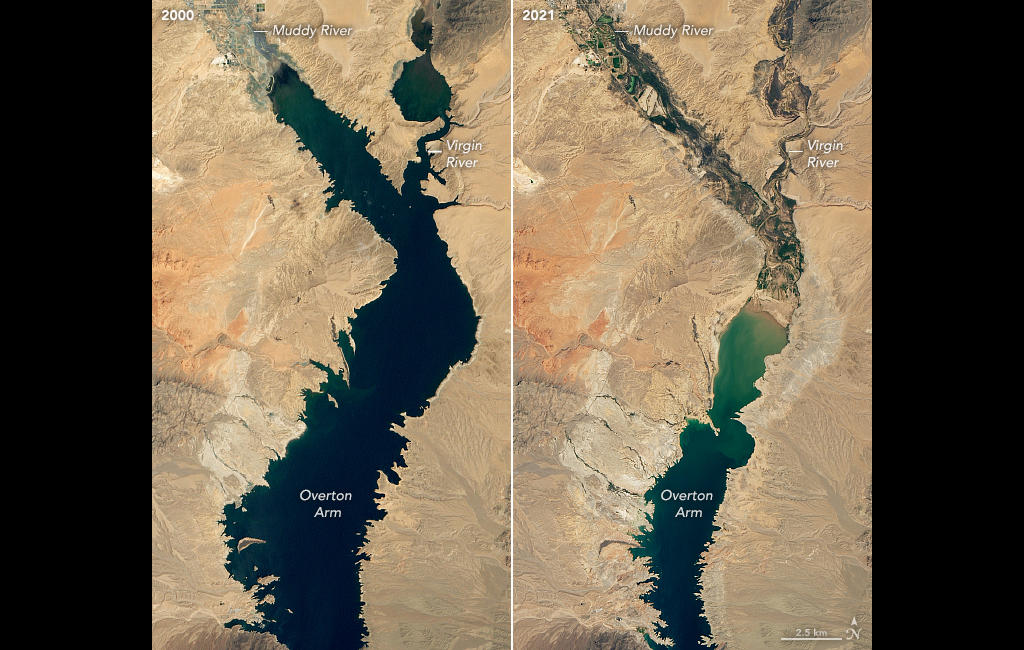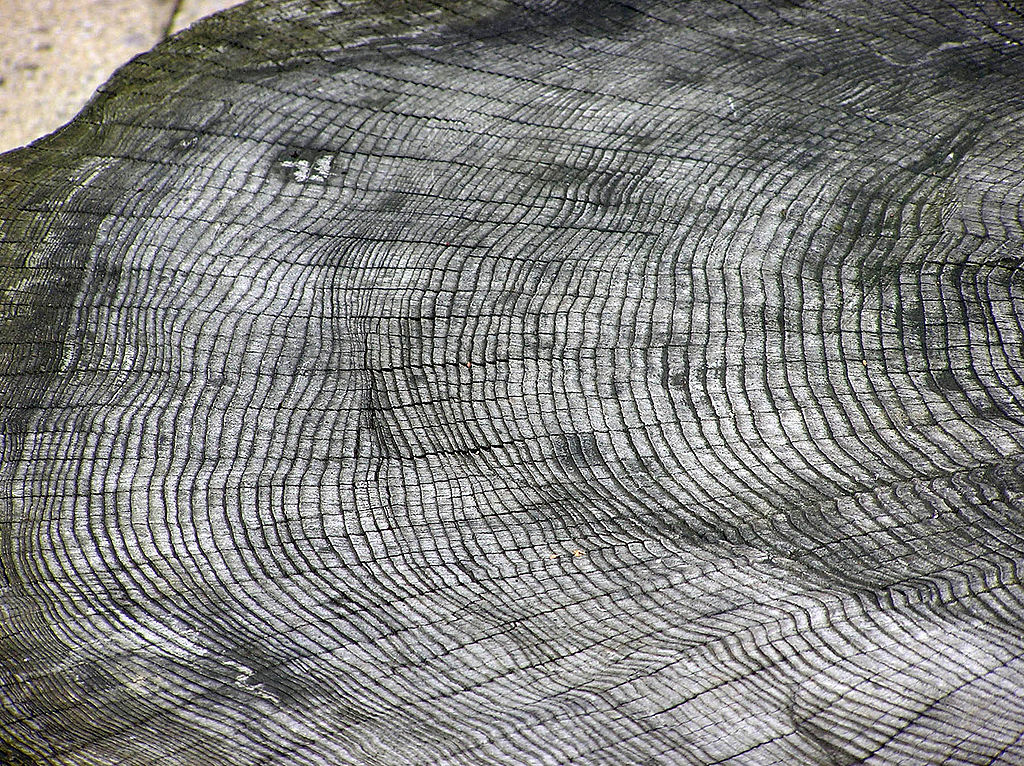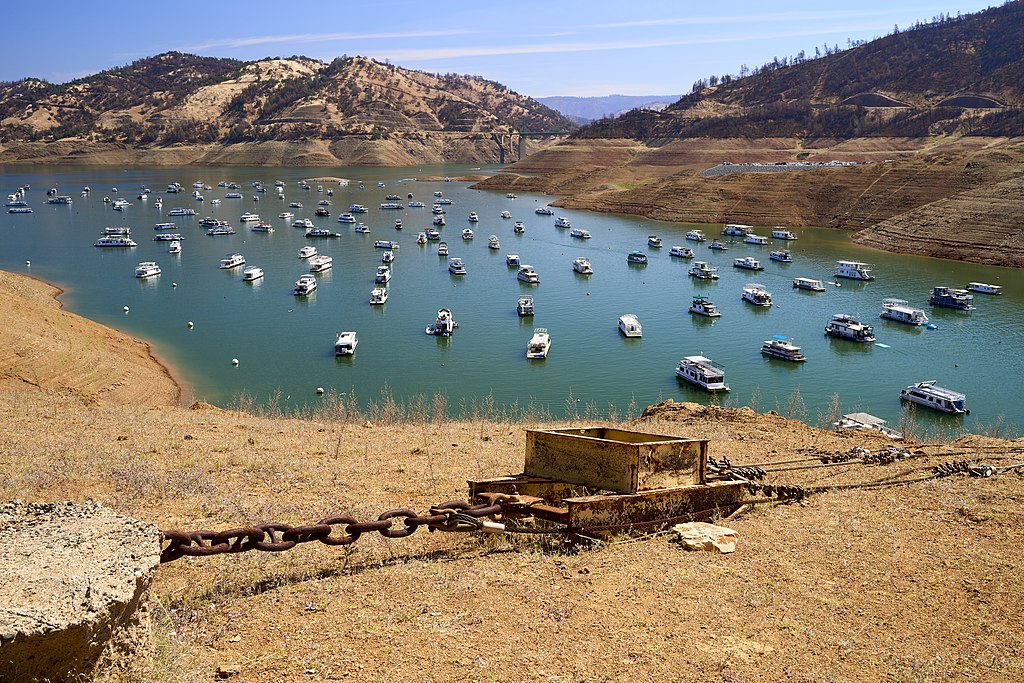The Western United States has been struggling with a serious drought for years. A new study shows that this “megadrought” is the most serious dry period to hit the area in 1,200 years. The report makes it clear that climate change has made the drought worse.
Scientists use the word “megadrought” to describe a drought that’s both very serious and lasts for a very long time. Getting a lot of rain might end a drought. But it can take several rainy years in a row to end a megadrought.

(Source: Adam Hartman, NOAA/NWS/NCEP/CPC [Public domain], via Wikimedia Commons.)
The terrible effects of the megadrought in the US West have been growing clearer every year. The dry conditions have led to record-setting forest fires. And rivers, lakes, and reservoirs have been drying up. Two of the biggest reservoirs in the country, Lake Mead and Lake Powell, are only about one-third full.
Still, tens of millions of people live in the area, and cities there are growing rapidly. The US West is home to massive farms and huge ranching areas. It’s gotten harder and harder to meet the water demands in the area.
Last year, for the first time, people managing the Colorado River announced that there wasn’t enough water. That led to cuts for many of the 40 million people who use the river’s water.

(Source: Lauren Dauphin, NASA’s Earth Observatory.)
New research shows that the last time there was a similar megadrought was in the late 1500s. At that time, the West was still home to many Native American tribes. And that drought wasn’t as bad as this one.
Dr. Park Williams of the University of California led the research. He studies how living things and the climate affect each other. To learn about climate conditions and droughts in the long past, the scientists studied the rings inside tree trunks.
Tree rings do a good job of recording how much a tree grows every year. When there’s plenty of water, trees grow quickly, leaving a thick ring. In dry years, trees grow more slowly and the tree’s ring for that year is thin.

(Source: Arpingstone [Public domain], via Wikimedia Commons.)
The researchers studied the rings in trees at thousands of locations in the West. They studied living trees and dead trees. They even studied large logs from ancient Native American sites.
By looking at climate information from the last 100 years, the scientists were able to make a connection between how wide the tree rings were and how dry the soil was. They were then able to use the rings on very old trees to get information about droughts going back as far as the year 800 AD.
They discovered that last year was the second driest summer in 300 years. The driest summer came in 2002, near the beginning of the current drought.

(Source: © Frank Schulenburg [CC BY-SA 4.0], via Wikimedia Commons.)
The researchers also looked at the part played by human-caused climate change. Some sort of drought is likely to have happened anyway. But the scientists report that climate change made this drought over 40% more severe than it would have been. In fact, the scientists say the megadrought probably would have ended after heavy rains in 2005, if it weren’t for climate change.
